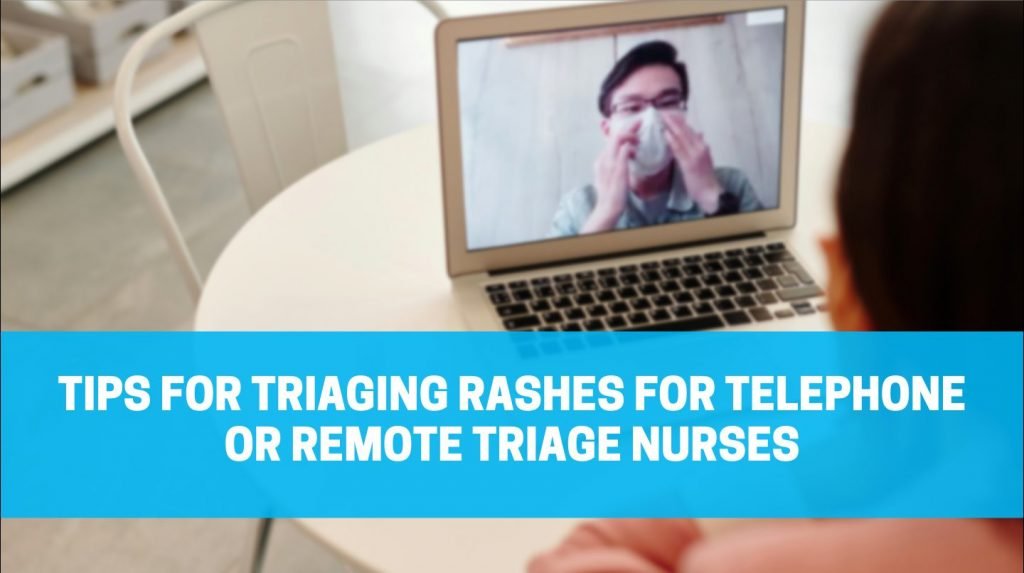Rashes are a common problem for adults and children alike, and they are one of the most common symptoms triage nurses come across. Rashes can be a problem that can be cared for at home or a symptom of something more serious. Remote telephone triage and telemedicine technology has evolved to include the ability for patients to send their providers or nurses images from their smartphones using apps or web portals. But despite these advances, careful triage is needed so serious health conditions are not overlooked.
What You Need to Find Out
The Schmitt-Thompson protocols will walk you through all the questions you need to ask while triaging. Rest assured that if you use these gold standard protocols, you will come to a safe disposition. Some of the things that you will ask is:
- Where is the rash on your body?
- What size is the rash? Is it bigger or smaller than a quarter?
- Is it itchy?
- Is it painful?
- Have you recently tried any new foods, soaps, detergents, lotions?
The protocols will guide you and the patient toward the appropriate level of care in a step-by-step process.
Warning signs that a rash may be serious:
- The rash is accompanied by fever
- The rash is widespread or on multiple parts of the body
- The rash is blistering/bleeding
- The rash looks infected (warm, painful, yellow or green fluid, or accompanied by red streaking)
- If the rash is around the eyes, mouth, or genitals
- The rash is widespread on and infant under 1-month old
These are only a few, urgent things to look out for. Because of the complexity and myriad of reasons a rash may develop, it’s vital to be using tried and tested protocols while triaging rashes over the phone. Equipped with special protocols designed to rule out emergent symptoms, such as those listed above, the nurse must be careful to follow the protocol as it was designed, as well as use her nursing judgment and critical thinking skills to determine the safest disposition for her patient.
More often than not, rashes are non-serious and can be treated at home safely using treatments varying from simply avoiding allergens, taking antihistamines, sparingly using cortisone creams, or simply observing the rash to be sure it does not change. If the disposition you arrive at calls for home care, there are many home remedies the patient can try.
Always encourage patients to contact their doctor if the rash does not clear up or worsens over time. Triaging rashes remotely and over the phone can be difficult but if you follow the protocols, it can be done safely.
Software such as myTriageChecklist uses Schmitt-Thompson protocols and can help any nurse or healthcare organization handle these sorts of triage calls and many more. This software is now available for a 30 day free trial here.






